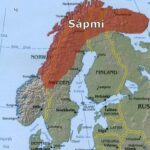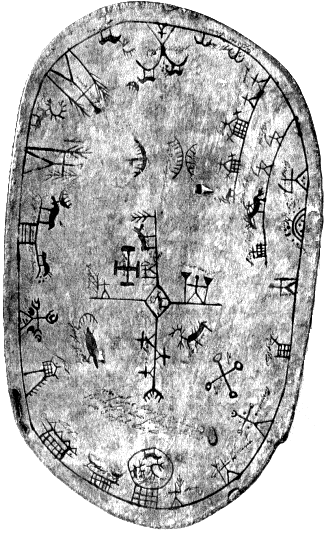Biegolmai – the Windman
[Bieg – Wind]
[Olmai – Man]
Proper pronunciation of 'Biegolmai'
| The Sámi people (also spelled Sami or Saami) are an indigenous Finno-Ugric people inhabiting Sápmi, which today encompasses large northern parts of Norway and Sweden, northern parts of Finland, and the Kola Peninsula within the Murmansk Oblast of Russia. The Sámi have historically been known in English as Lapps or Laplanders. Sámi ancestral lands are not well-defined. Their traditional languages are the Sámi languages and are classified as a branch of the Uralic language family. |  |
More reading on Sápmi and Saami: https://sacredland.org/lands-of-the-sami-finland-norway-russia-sweden/
In Saami mythology Biegolmai (there are different spellings: Bieggolmai, Biegkålmaj, Bieggålmåj) was one of the three most important deities and ruled over the wind, as well as weather, water and sea.
“Biegolmai held in his right hand a shovel with which he shovelled the winds into their caves, and in the left hand a club with which he drove them out again so they might blow” [Randulf]
In other areas of Sapmi Biegolmai is described as having two shovels instead of one shovel and one club.
Biegolmai is also known as the creator of Sapmi.
“The Saami creation myth, directly related to their harsh environment, tells the story of a monstrous giant named Biegolmai, the Wind Man. In the beginning of time, Biegolmai created the Sapmi region by taking two huge shovels, one to whip up the wind and the other to drop such huge amounts of snow that no one could live there. One day, however, one of Biegolmai’s shovels broke, the wind died down, and the Saami were able to enter Sapmi.”
Biegolmai is depicted in some Nåjd drums (shaman drums). In this drum Biegolmai has two shovels.


Shaman drum from seventeenth century with Biegolmai to the right of the centre.
